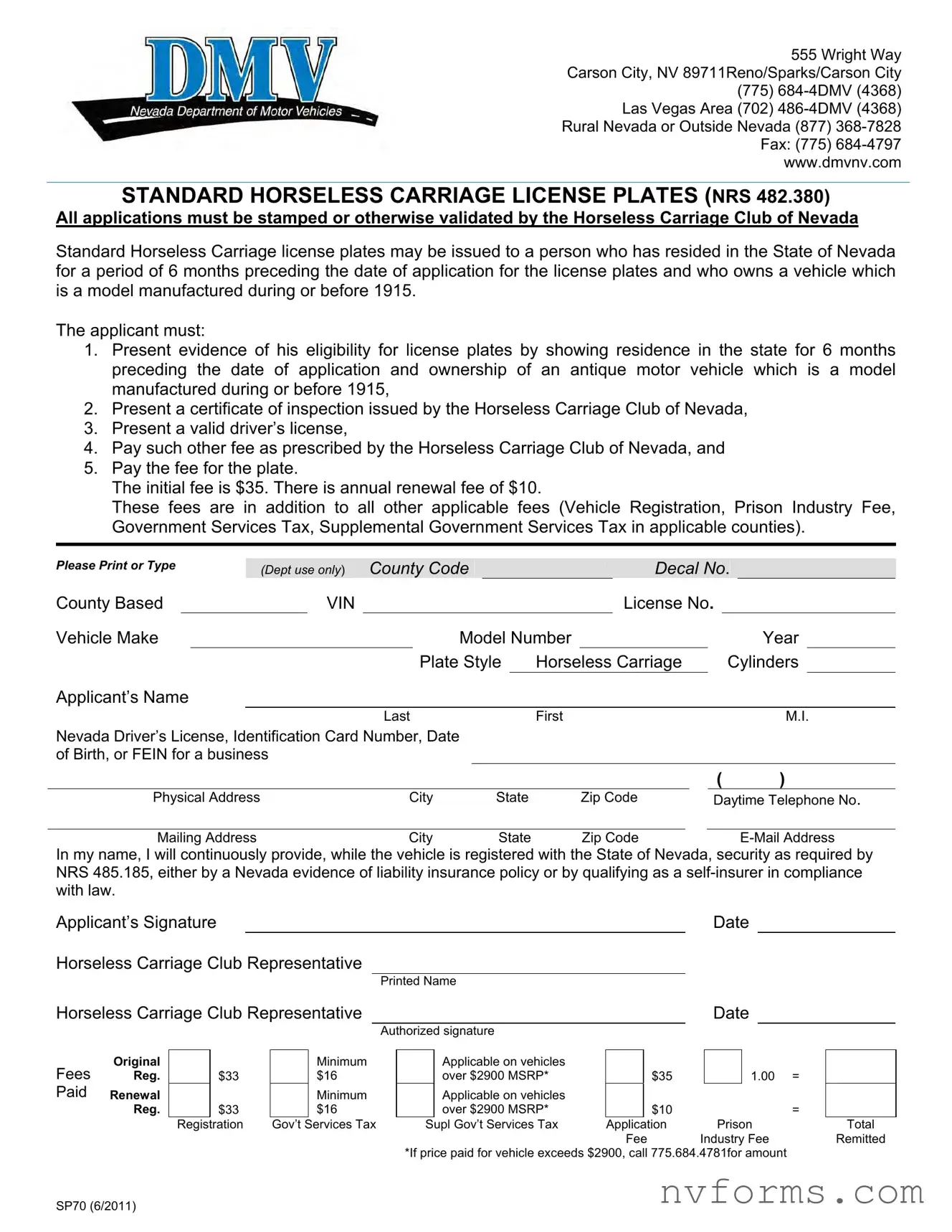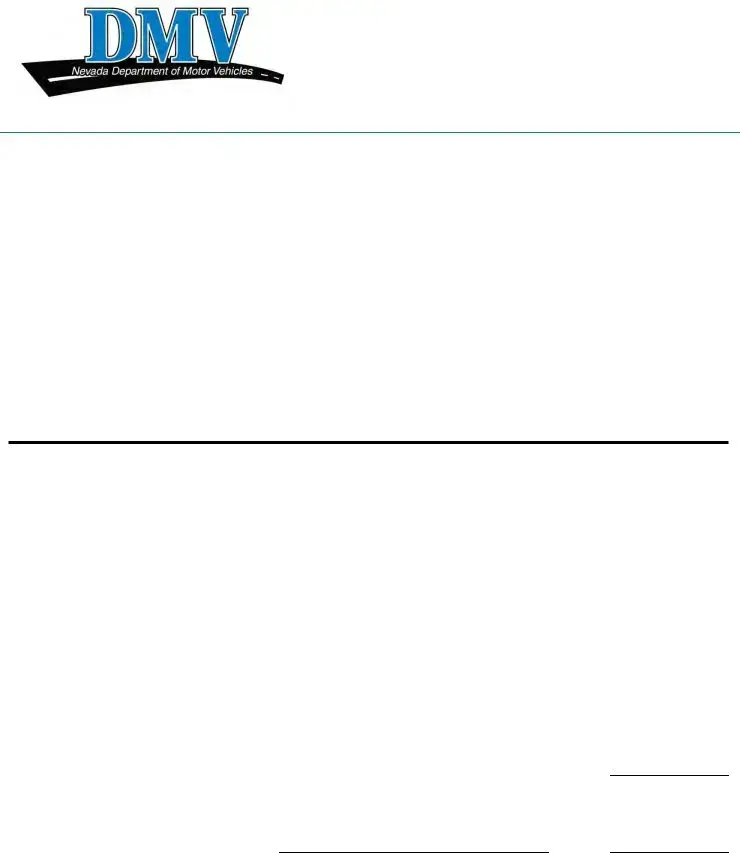The DMV SP70 form, used for the registration of standard horseless carriage license plates in Nevada, shares similarities with other documents within the domain of vehicle registration, particularly those catering to specialty or antique vehicles. These similarities can be seen in the requirements for application, the provision of evidence for eligibility, and the associated fees.
Antique Vehicle Registration Form: Just like the SP70 form, the Antique Vehicle Registration Form requires applicants to prove ownership of a vehicle of a certain age—typically at least 25 years old. Both forms necessitate applicants to submit evidence of the vehicle's age and ownership, such as a title or bill of sale. Additionally, they both require a certification from an authorized club or body—in the case of the SP70, the Horseless Carriage Club of Nevada. This further establishes the vehicle's eligibility under the prescribed criteria. The fee structures in both forms include an initial registration fee and an annual renewal fee, underlining the ongoing commitment of owners to maintain their registration status.
Custom Vehicle Registration Form: This form, designed for vehicles that have been substantially altered from their original manufacturer specifications, parallels the SP70 form in requiring detailed documentation of the vehicle. Both forms necessitate applicants to present a valid driver's license and to pay specific fees associated with the registration process, including initial and renewal fees. Moreover, both forms call for an inspection certificate, which serves the purpose of verifying the vehicle's condition and conformity to safety standards. The aspect of ensuring continuous security as required by state law, through either insurance policy or as a self-insurer, is a shared requisite, emphasizing the safety and financial responsibility of the vehicle owner.
Special Interest Vehicle Registration Form: This form is used for vehicles that might not necessarily qualify as antique but hold significant interest either due to their make, model, or historical significance. Similar to the SP70 form, applicants must demonstrate residency and provide a detailed description of the vehicle, including make, model, year, and a statement of the vehicle's special interest or historical value. Both forms require payment of not just the registration fees but also any additional taxes or charges mandated by local or state jurisdictions. They embody the principle of granting special recognition to vehicles that contribute cultural value, while also ensuring these vehicles meet regulatory and safety standards.
Each of these forms, while serving distinct types of vehicles, shares a common structure with the SP70 form in terms of application procedure, documentation, and fee payment. This highlights the comprehensive approach taken by vehicle registration authorities to cater to various special categories of vehicles, ensuring a balance between celebrating heritage and ensuring public safety.

